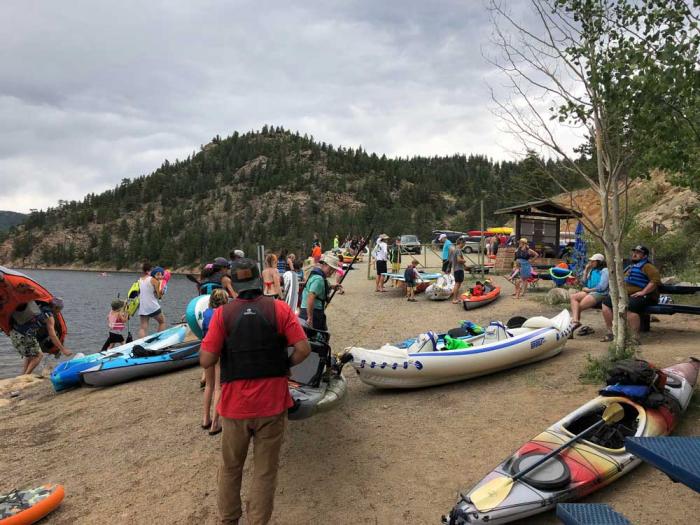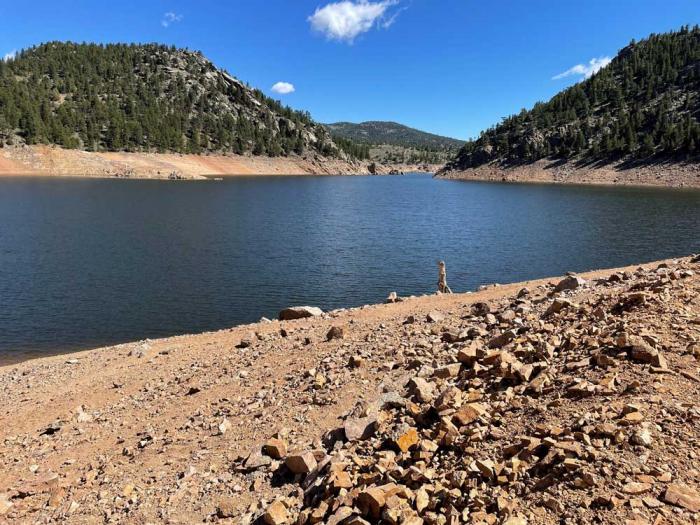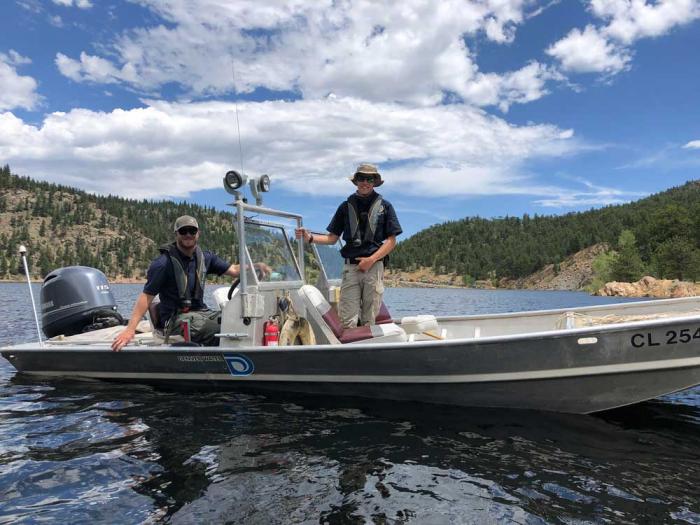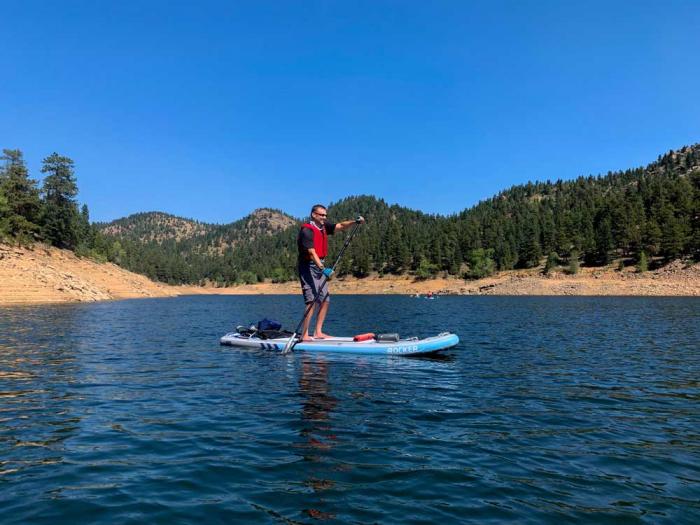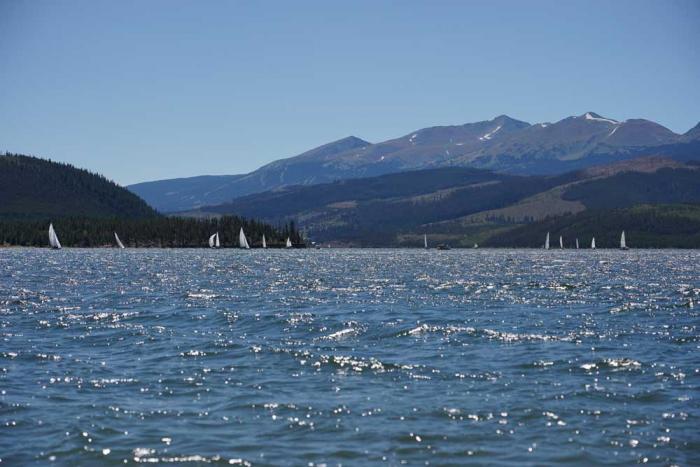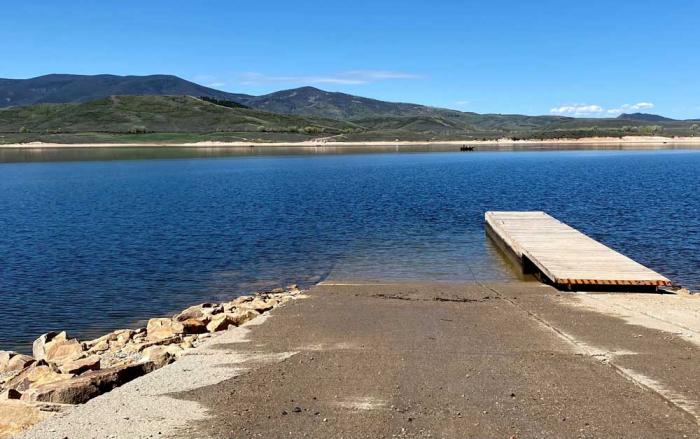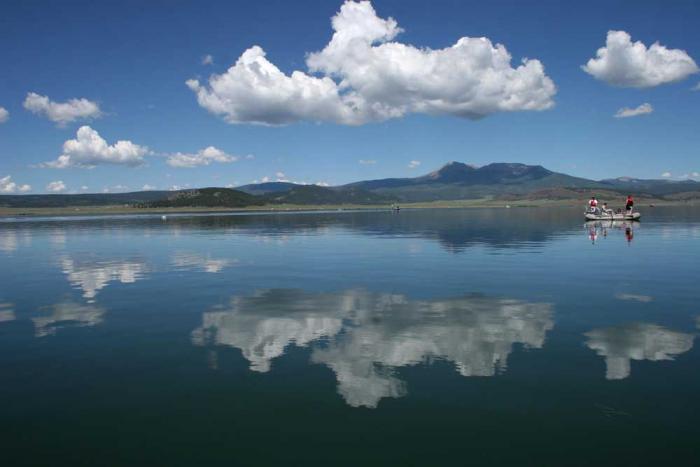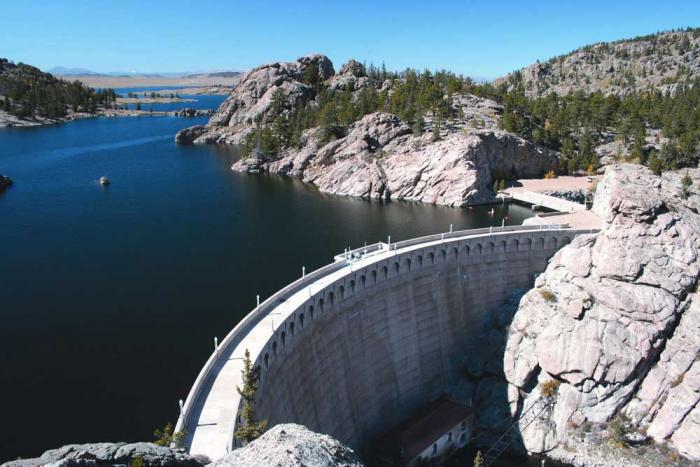Have fun, stay safe on the water
On the heels of a busy recreation season in 2020, Denver Water is urging boaters to play it safe on its reservoirs this year.
Denver Water allows boating on five of its mountain reservoirs — Antero, Dillon, Eleven Mile Canyon, Gross and Williams Fork.
Along with boating, the reservoirs offer camping, fishing and hiking, which makes them popular tourist destinations for people across Colorado and beyond.
“We want people to come up and enjoy the reservoirs and all that these operational facilities have to offer for recreators, but we also want people to have a plan, be safe and prepare for crowds — especially on weekends,” said Brandon Ransom, recreation manager at Denver Water.
Denver Water saw roughly a 50% to 75% increase in visitors in 2020 at its recreational facilities compared to 2019 levels before the COVID-19 pandemic hit.
While it’s unknown how crowds will be in 2021 at Denver Water’s reservoirs, outdoor recreation across the state had been growing steadily even before the pandemic-driven surge last year — and there are no signs that trend will change, as highlighted by The Know OutDoors.
Visitors to Denver Water’s reservoirs should also be aware of changing water levels that could impact boating.
“It’s important to remember that the primary purpose of our reservoirs is to store water for more than 1.5 million people in the metro area,” Ransom said. “Water levels can fluctuate depending on mountain runoff, downstream water rights and customer demand.”
Denver Water’s reservoirs are all closed to swimming due to the cold temperatures of the water — often around 40 to 60 degrees.
Denver Water also follows all boating safety regulations set by Colorado Parks and Wildlife and the U.S. Coast Guard. This includes boat inspections for aquatic nuisance species.
“We were surprised how many people came to our reservoirs last year without life jackets,” Ransom said. “It’s important to know that you need a life jacket with a paddleboard.”
Personal floatation devices are required for every passenger on board a boat, including paddleboards.
Life jackets are strongly recommended to be worn on the water and are required at all times by children under 13.
“The most common problems we see on the water are paddleboarders unable to paddle against the wind,” said Dominic Battista, recreation ranger at Gross Reservoir. “We often have to rescue paddlers who get blown into the rocks.”
Battista said he’s also had to rescue people from canoes and kayaks when their boats got swamped. Other people have suffered from hypothermia from falling into the 40-degree water.
Reservoirs are patrolled by local sheriff’s departments and Colorado Parks and Wildlife. Failure to have proper life jackets can result in a citation.
Here’s a look at what to expect at Denver Water’s reservoirs this year:
Gross Reservoir
The reservoir is located in the foothills of Boulder County southwest of Boulder.
- The water level at Gross changes throughout the season as it’s impacted by mountain snowmelt and customer demand for water in the city.
- In 2021, the reservoir is expected to come close to reaching capacity in mid-to-late June and likely hold steady throughout the boating season.
- The boating season on Gross runs from the Friday before Memorial Day through Sept. 30 and from sunrise to sunset. The dates are set as part of Denver Water’s permit with the Federal Energy Regulatory Commission. Visitors should follow GrossReservoir.org for future impacts due to the Gross Reservoir Expansion Project.
- Gross is open to canoes, kayaks and paddleboards. Motorized boats, trolling motors and sailboats are not allowed.
- Innertubes, inflatable mattresses and other “pool-type” floating devices are not permitted.
- Parking is limited at the reservoir and parking spots typically fill by midmorning on weekends, especially at the Osprey Point boat ramp. Boaters may have to walk up to a half-mile to reach the water from some parking spots to the water.
- On busy days, visitors may have to wait until others leave before being allowed into the parking area. Boaters are encouraged to visit on weekdays to avoid busy times.
- The North Shore recreation area offers another access point for watercraft but requires hiking down a steep hill.
- Winds typically pick up throughout the day so paddlers should be prepared.
- The Winiger Ridge campground is also very popular and is managed in partnership with the U.S. Forest Service. The campsites are available on a first-come, first-served basis.
- Cell coverage is poor around the reservoir, so plan accordingly.
More information about recreation at Gross Reservoir can be found here.
Dillon Reservoir
The popular recreation destination is located in Summit County next to the towns of Breckenridge, Dillon and Frisco. Dillon is the largest of Denver Water’s reservoirs.
Dillon is fed by mountain snowmelt and is a primary water supply source for the Denver metro area. Denver Water does its best to keep water levels as high as possible from Memorial Day through Labor Day.
Lower mountain snowpack, dry soils and higher water use in the city caused by extended hot and dry times like Colorado experienced in 2020 can lead to lower water levels.
Denver Water carefully manages Dillon’s outflow to minimize springtime flooding below the dam. Outflows from the dam also impact rafting and fish habitat downstream.
- In 2021, the reservoir is likely to peak at 90% to 95% full, which leaves the reservoir’s water levels around 3 feet to 9 feet below full water levels.
- Outflows from Dillon Dam are not expected to cause flooding issues during the 2021 runoff season.
- Dillon Reservoir is open to motorized boating as well as sailing and paddle sports. All motorized boats must launch from either Dillon Marina or Frisco Bay Marina.
- Water temperatures range from the 40s in the spring to 50s and low 60s in late summer. However, temperatures below the surface remain colder all summer.
- Boaters should be aware of Dillon’s gusty winds and occasional microbursts. In 2020, a sailor drowned on Dillon after a strong gust hit his boat and knocked him into the cold water. Dillon can see waves higher than 3 feet on windy days.
- The Giberson Bay area is very popular with canoers, kayakers and paddleboarders and the limited parking spaces fill up early on weekends. Other launch points for paddlers include Dillon, Frisco and the Blue and Snake river inlets near Breckenridge and Keystone.
- The Dillon Reservoir Recreation Committee manages recreation on the reservoir and the Dillon and Frisco marinas manage boat rentals and boat ramps on the reservoir.
More information about recreation at Dillon Reservoir is available here.
Williams Fork Reservoir
This reservoir is located in Grand County east of Kremmling.
- The reservoir is open to motorized and human-powered boating, typically from mid-May to Oct. 31.
- The reservoir’s water level is expected to peak in late June or early July and then start to drop.
- Water levels at Williams Fork are expected to be lower than normal in 2021 due to low snowpack and downstream water rights obligations on the Colorado River.
- Low water levels could force the East Boat Ramp to close earlier than usual as the reservoir’s surface must be above 7,791 feet in elevation for the boat ramp to be open.
- Access for portable watercraft will not be affected if the surface falls below 7,791 feet in elevation as these craft should use the West Boat Ramp to access the reservoir.
More information on recreation at Williams Fork Reservoir is available here.
Antero Reservoir
This small, shallow reservoir is located in Park County south of Fairplay.
- Antero is extremely popular for fishing all year round.
- Motorized and human-powered craft are allowed on the reservoir.
- Denver Water uses the reservoir primarily as a backup water supply in times of drought. In 2021, the water level is expected to remain near capacity.
- Campsites on the reservoir typically fill up during weekends in the summer.
More information about recreation at Antero Reservoir is available here.
Eleven Mile Canyon Reservoir
This large body of water is located in Park County west of Florissant.
- The reservoir is open to power boats, personal motorized watercraft, sailboats, windsurfers, canoes, kayaks and paddleboards.
- Wetsuits must be worn for windsurfing and personal motorized watercraft.
- The reservoir is surrounded by Eleven Mile State Park, which offers camping and is managed by Colorado Parks and Wildlife.
- This reservoir also is used by Denver Water as a backup source of water, typically used during drought years. In 2021, the reservoir level is expected to stay near capacity.
- Boaters should prepare for gusty winds and big waves in the afternoon on the reservoir.
More information about recreation at Eleven Mile Canyon Reservoir can be found here.
Are dogs welcome?
Dogs are welcome at all Denver Water reservoirs and campgrounds including Eleven Mile State Park but must be on a leash on the grounds.
Denver Water asks that you bring doggie bags to clean up after them.
Also, it’s a good idea to get life jackets for dogs riding in your watercraft.
Other reservoirs
Denver Water’s other major reservoirs — Cheesman, Marston, Ralston and Strontia Springs — are not open to boating. Hiking and fishing are available at Cheesman Reservoir.
Denver Water also owns several reservoirs that were former gravel pits in Adams and Weld counties. These downstream reservoirs are not open for boating or recreation.
“Denver Water understands the value its facilities hold for the community,” Ransom said.
“As working facilities, there may be temporary closures due to operations and maintenance projects that create unsafe conditions for the public, so please be sure to check each of our recreation webpages for specific updates about a Denver Water facility before visiting.”
Other popular reservoirs for boating in Colorado are run by Aurora, Colorado Parks and Wildlife, Colorado Springs Utilities, Northern Water and the U.S. Bureau of Reclamation.


